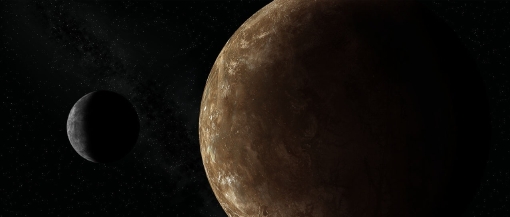Concept
In 2005, a collaboration from MIT and Williams College developed a set of instruments called POETS (Portable Occultation, Eclipse, and Transit System). POETS consist of a high-speed, visible wavelength camera (Andor iXon), an accurate GPS, a control computer, and other associated components. They fit into two carry-on pieces of luggage to faciliate transport and usage on telescopes around the world.
We have received additional funding from NASA's Planetary Astronomy program to develop a dedicated POETS for use at NASA's 3-m IRTF (InfraRed Telescope Facility) on Mauna Kea, HI. Science motivation for this enterprise includes the observation of stellar occultations by small bodies in the outer solar system and extrasolar planet transits.
The IRTF MORIS (MIT Optical Rapid Imaging System) mounts on a side-facing exit window of SpeX, which is a facility instrument. Since SpeX is a 0.8-5.4 micron imager and spectrograph with a high-speed mode, this mounting scheme is ideal for simultaneous observations over visible and near-IR wavelengths. The MORIS telescope-camera interface module contains reducing optics and a filter wheel, allowing greater collection of light in a shorter integration time and filter selection for signal-to-noise ratio optimization and study of objects at particular wavelengths.
The field of view of MORIS is the same as SpeX (60 arcsec diameter), with a plate scale of ~0.12 arcsec/pixel. Supported filters include SDSS g', r', i', and z', Johnson V, VR, and long-pass red.
This project is currently a Principle Investigator instrument and is based on the original MIT-Williams College POETS. Future work plans include modifications to the software to allow control from IRTF computers and conversion to a facility instrument.
